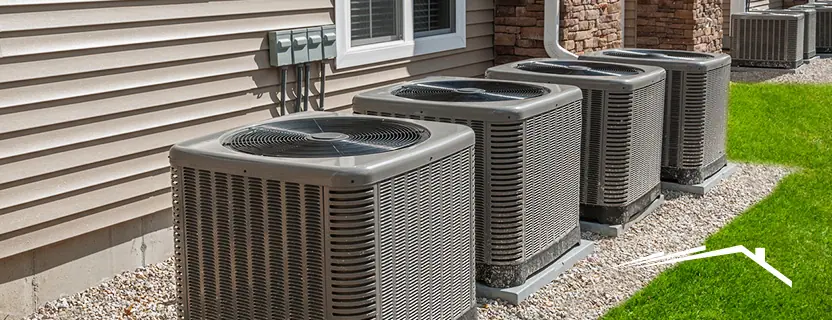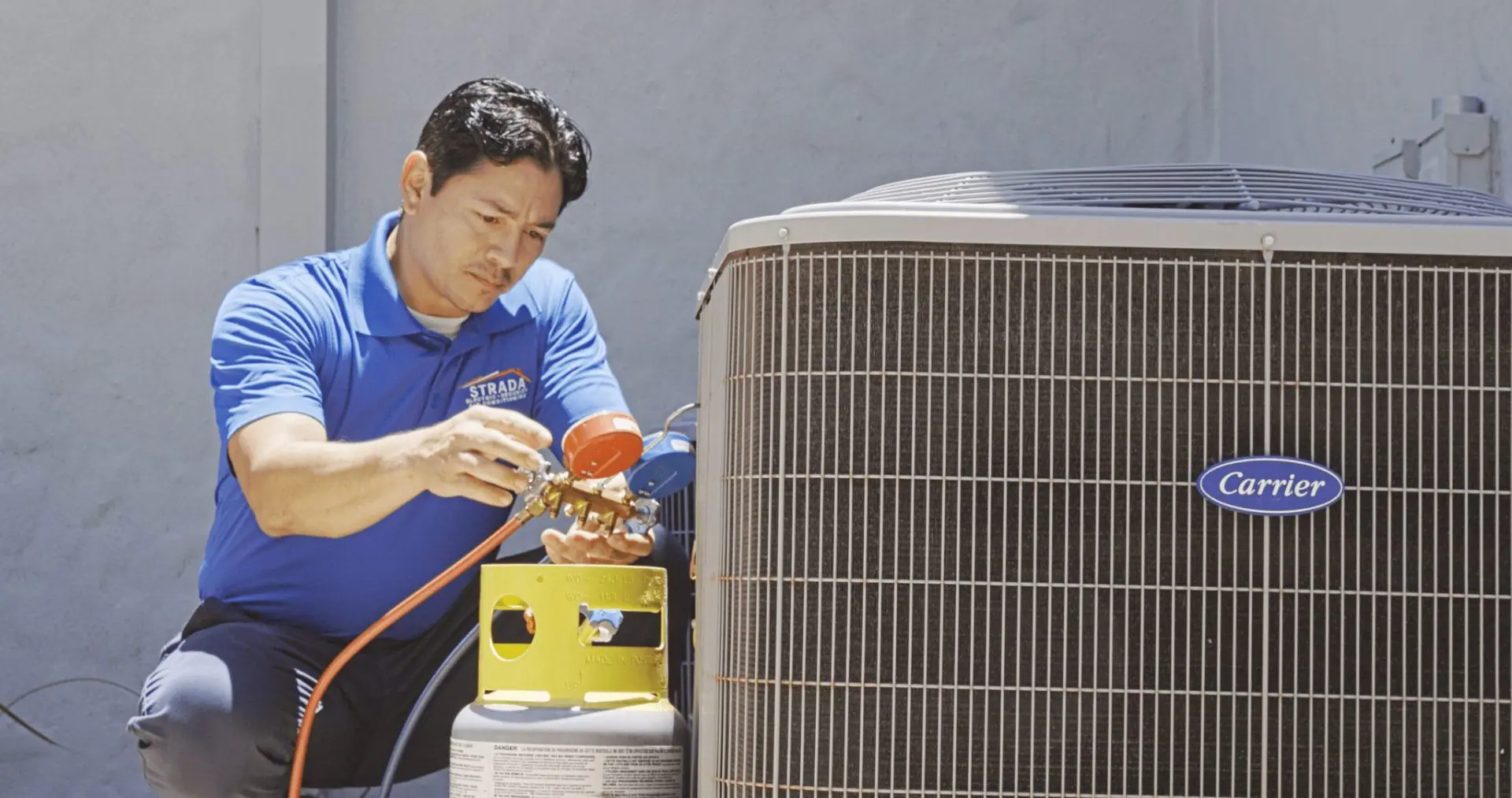How a Heatpump and Furnace Interact to Enhance Your Home's Home heating Performance
Understanding exactly how a heatpump and heating system interact is necessary for house owners seeking effective heating options. Each system has its staminas, providing a well balanced technique to home comfort. The heatpump masters moderate temperature levels, while the heating system supplies fast warmth throughout extreme cold. This synergy not only reduces power costs however likewise boosts the life expectancy of both devices. What elements influence this partnership, and how can house owners maximize their benefits?
Comprehending Heat Pumps: How They Function
Although many individuals might be not familiar with their internal operations, heatpump play a vital function in modern heater. These devices operate by moving heat from one place to an additional, utilizing the principles of thermodynamics. In cooler months, a warm pump essences warmth from the outdoors air, ground, or water, and transfers it indoors to heat the home. On the other hand, throughout warmer months, it can reverse the procedure, acting as an air conditioner by getting rid of heat from inside to the outside.Heat pumps consist of an evaporator, development, condenser, and compressor shutoff. The cooling agent within the system takes in warm as it evaporates at low temperature levels and pressures. The compressor then enhances the pressure and temperature level of the cooling agent, permitting it to launch warmth as it condenses. This efficient process can considerably lower energy intake compared to traditional heating methods, making heatpump a lasting choice for environment control in homes.
The Duty of Heaters in Home Home Heating
Heating systems play a crucial role in home heating by providing a dependable source of heat during the cooler months. They run by generating heat through burning or electrical resistance, distributing it throughout the home through ducts or radiant systems. The performance of a heating system is commonly gauged by its Yearly Fuel Utilization Efficiency (AFUE) score, which indicates how successfully the device transforms fuel into heat.Furnaces can utilize numerous energy resources, consisting of gas, lp, oil, or electrical power, enabling property owners to choose the most appropriate choice for their needs. Unlike heatpump, which might have a hard time in extreme cool, furnaces keep regular efficiency, making certain that indoor temperatures remain comfortable despite outdoor conditions. Furthermore, contemporary heaters often come furnished with advanced modern technology, such as variable-speed blowers and wise thermostats, improving their efficiency and responsiveness. This flexibility makes heating systems a vital part in all-inclusive home heating strategies.

Benefits of Making Use Of Both Equipments Together
Incorporating the strengths of both heating systems and heat pumps can lead to a more efficient and reliable home heating option. Utilizing both systems enables house owners to make the most of the warm pump's power efficiency throughout milder temperatures while relying upon the heater for even more extreme cold conditions. This twin approach can significantly reduce power expenses, as warm pumps take in much less power than standard heating methods when temperature levels are moderate.Additionally, utilizing both systems with each other can improve convenience levels in the home. Heatpump can offer regular, also home heating, while furnaces can promptly raise ambient temperatures when required. The combination of both systems can expand the life expectancy of equipment by minimizing wear and tear on each unit, as they share the workload. Eventually, property owners can appreciate a well balanced, economical heating remedy that adjusts effortlessly to varying weather, ensuring a warm and inviting home throughout the winter season months.
Exactly How Heat Pumps and Furnaces Enhance Each Other
When home owners integrate heatpump and heating systems, they produce a corresponding heating unit that optimizes efficiency and convenience. Heatpump run by moving warmth from the outside air or ground, making them extremely effective in modest climates. They succeed during milder temperatures, offering affordable heating. Conversely, heating systems create warm through combustion or electrical resistance, delivering strong, immediate warmth throughout extreme cool conditions.The combination of these two systems permits for vibrant changes based upon temperature level changes. Throughout warmer months or milder winter months days, the heatpump can take the lead, saving energy and lowering prices. As temperature levels decrease, the furnace can flawlessly involve, making certain regular heat throughout the home. This synergy not just enhances energy use however also boosts the lifespan of both systems, as each unit runs within its excellent efficiency array. With each other, they produce a balanced setting that adapts to varying environment demands.
Optimizing Efficiency: Tips for Homeowners
Property owners can enhance their home heating effectiveness via numerous functional strategies. Developing a regular upkeep routine, integrating clever thermostat technology, and applying efficient insulation and sealing remedies are essential actions. These procedures not only enhance comfort however additionally minimize power costs.
Normal Maintenance Arrange
To assure maximum home heating efficiency, developing a normal maintenance timetable is important for any kind of home. Property owners need to prioritize regular inspections of both warm pumps and furnaces to establish peak performance. This consists of altering air filters each to three months, as stopped up filters can substantially decrease effectiveness. In addition, organizing professional maintenance a minimum of annually allows service technicians to recognize and address prospective problems prior to they escalate. Property owners need to also clean the heatpump's exterior unit to stop particles build-up that can hinder air flow. By sticking to a normal upkeep timetable, property owners not just boost their heater' performance but additionally extend their lifespan, leading to greater convenience and reduced energy expenses throughout the colder months.
Smart Thermostat Integration
Incorporating a wise thermostat right into a home heater can significantly improve power effectiveness, particularly as it permits precise control over temperature setups. These devices can learn the house owner's schedule and preferences, instantly readjusting the temperature to optimize convenience while decreasing power usage. They can reduce home heating throughout times when the home is unoccupied, reducing unneeded usage. Several clever thermostats also supply real-time power use information, allowing home owners to make educated decisions about their home heating behaviors. Additionally, remote accessibility using smart device apps allows customers to readjust settings from anywhere, making sure the home is warm upon return. On the whole, clever thermostat integration not just improves comfort however significantly contributes to energy cost savings and efficiency.
Insulation and Sealing Solutions
Smart thermostats play a crucial function in power effectiveness, yet their effectiveness can be greatly enhanced by proper insulation and sealing services. Homeowners ought to prioritize protecting attics, floors, and wall surfaces to lessen heat loss. Top notch insulation products, such as spray foam or fiberglass, can considerably enhance thermal resistance. Additionally, sealing spaces around home windows, doors, and ducts prevents chilly air seepage and heat getaway. Weatherstripping and caulking are reliable techniques for dealing with these leakages - heat pump replacement ooltewah tn. Normal assessments for air leaks, along with the usage of blower door tests, can aid identify trouble areas. By investing in insulation and securing, home owners can enhance the performance of their heating unit, ultimately causing decreased energy intake and reduced energy bills
Typical Misconceptions Concerning Heat Pumps and Furnaces
What misunderstandings surround warmth pumps and heaters? Many people erroneously believe that heatpump are inefficient in chillier environments. Actually, modern-day heatpump are created to operate efficiently also in low temperature levels, offering reputable home heating discover this info here throughout winter months. One more usual myth is that furnaces are constantly much more efficient than heatpump. Nevertheless, this relies on the specific power resources and effectiveness ratings of the devices concerned. Some might additionally believe that making use of both systems all at once is unnecessary, however in reality, this combination can optimize heating effectiveness, specifically during extreme climate condition. Furthermore, people commonly assume that warmth pumps need constant maintenance, when in truth, they have similar upkeep needs to standard heater. By debunking these myths, homeowners can make even more informed choices regarding their home heating choices, eventually leading to boosted convenience and power effectiveness in their homes.
Maintenance Considerations for Combined Solutions

Frequently Asked Concerns
Can Warmth Pumps Work Efficiently in Incredibly Cold Climates?
Heat pumps can have a hard time in extremely cool climates as a result of decreased effectiveness and warmth removal limitations. Developments in technology have actually led to designs created for better efficiency in such problems, boosting their practicality in severe settings.
For How Long Do Warm Pumps and Furnaces Typically Last?
Warmth pumps normally last 15 to 20 years, while heaters have a lifespan of 15 to 30 years. Regular maintenance can expand their longevity, ensuring effective procedure and reducing the need for premature substitutes.

What Is the Ordinary Expense of Putting Up Both Systems?
The average cost of setting up both a heatpump and a furnace typically ranges in between $5,000 to $10,000 - ductless mini splits. Factors affecting this price include system dimension, setup complexity, and regional labor prices
Are There Tax Incentives for Utilizing Energy-Efficient Home Heating Equipments?
Numerous house owners make inquiries about tax obligation incentives for energy-efficient furnace. Numerous federal and state programs often offer rebates or credit histories, urging the fostering of lasting modern technologies to reduce power intake and advertise ecological obligation.
Exactly how Do I Select the Right Dimension Heat Pump and Heater?
Choosing the ideal dimension heatpump and heater involves computing the home's square video, thinking about insulation top quality, and reviewing local environment. Consulting a specialist can assure perfect system performance and energy efficiency based on specific needs. heat pump installation ooltewah tn. Understanding how a warm pump and heater work with each other is vital for home owners seeking reliable heating services. In cooler months, a warmth pump essences warmth from the outdoors air, ground, or water, and transfers it inside your home to warm up the living room. When home owners incorporate warmth pumps and furnaces, they develop a complementary home heating system that makes the most of efficiency and comfort. Heat pumps run by moving heat from the outdoors air or ground, making them very reliable in modest climates. Warm pumps can struggle in very cool environments due to minimized performance and heat extraction limitations